It’s hard to believe that it’s a decade since the iPhone was first unveiled, such has been the impact of the first modern smartphone.
On January 9 2007, when Steve Jobs took to the stage to show off this iPod / phone combo, the Motorola Razr V3 was the must-have handset, Nokia, BlackBerry and Sony Ericsson were all still a big deal, and the bulky, screen-sliding Telstra hiptop 2 was pegged as “the next big thing”.
Flip phones were still popular, physical buttons obviously had to be there and a 3MP camera was considered to be extravagantly high-end.
The original iPhone went on sale on June 29, 2007 - and the rest, as they say, is history.
Now, however, almost all phones follow the foundations laid out by that original iPhone and we’ve had 14 new models of Apple’s handset since then.
But exactly how much has the iPhone changed over the past ten years? Despite being described at the time by Jobs as a “magical device” that would “revolutionize the industry,” what was announced on stage was hardly the best technology around - and by modern standards, it’s positively antiquated.
So let’s see how much more power is packed into Apple’s most powerful phone, the iPhone 7 Plus, compared to the original.
Screen size
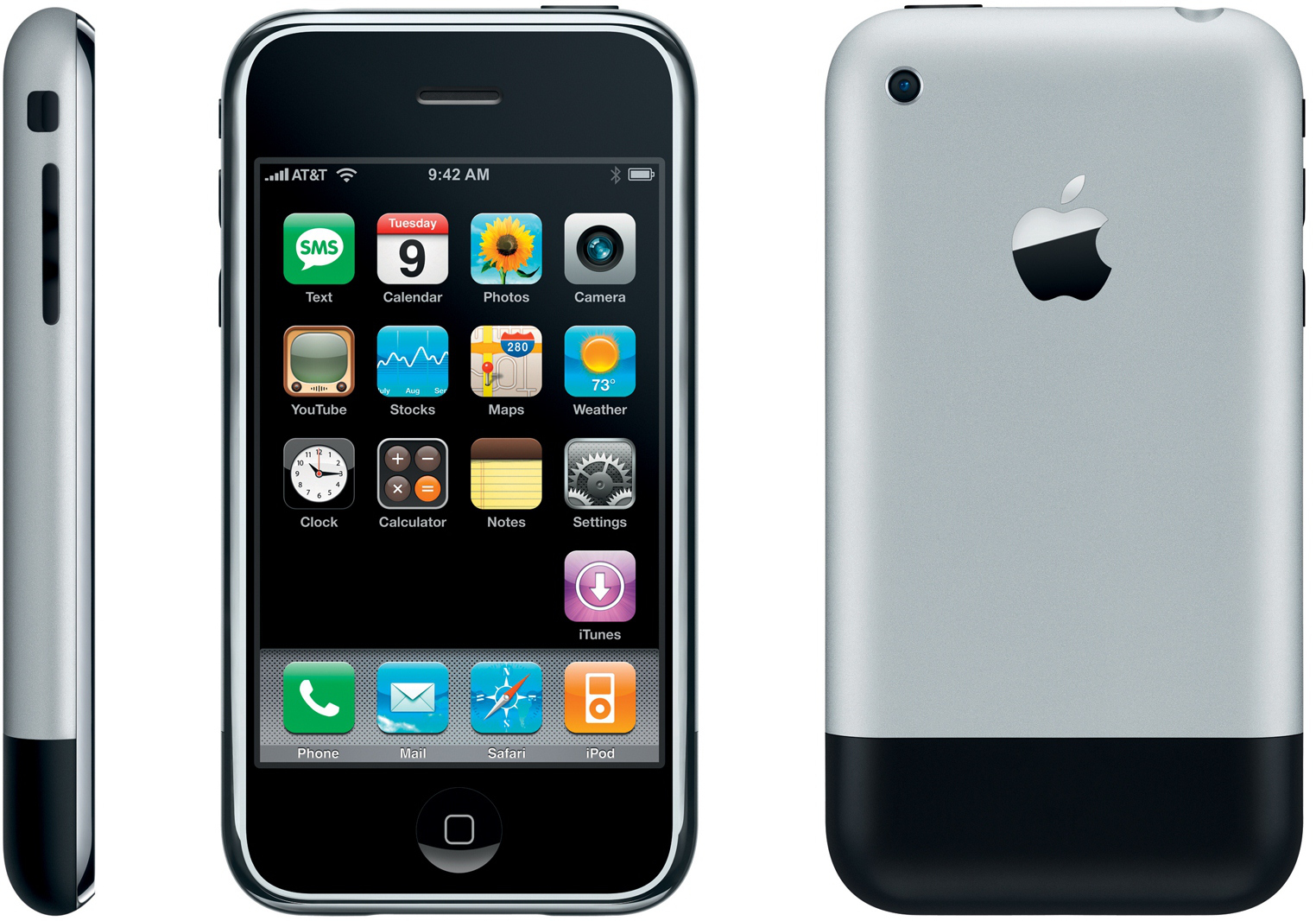
Pick up an original iPhone now and you’d wonder how we ever lived with such small, squat handsets. At the time, however, its 3.5-inch capacitive touchscreen (that accounted for 52% of the phone’s form) was a revolution.
One of the first mainstream phones to fully trade in physical buttons for a touch panel, it offered an expanse of visual real estate unseen at the time.
Today it’s more a surprise when a phone actually has keys, and screen sizes have expanded massively.
The iPhone 7 Plus plays host to a large 5.5-inch panel, and that’s far from the biggest on the market.
Though Apple resisted the trend for larger screen sizes for years. The original iPhone’s 3.5-inch form was retained from 2007 right up until 2012, and even then the iPhone 5 only adopted a 4-inch display.
It was then a further two years before the 4.7-inch iPhone 6 launched alongside the 5.5-inch iPhone 6 Plus, which is still Apple’s biggest handset size today.
Resolution
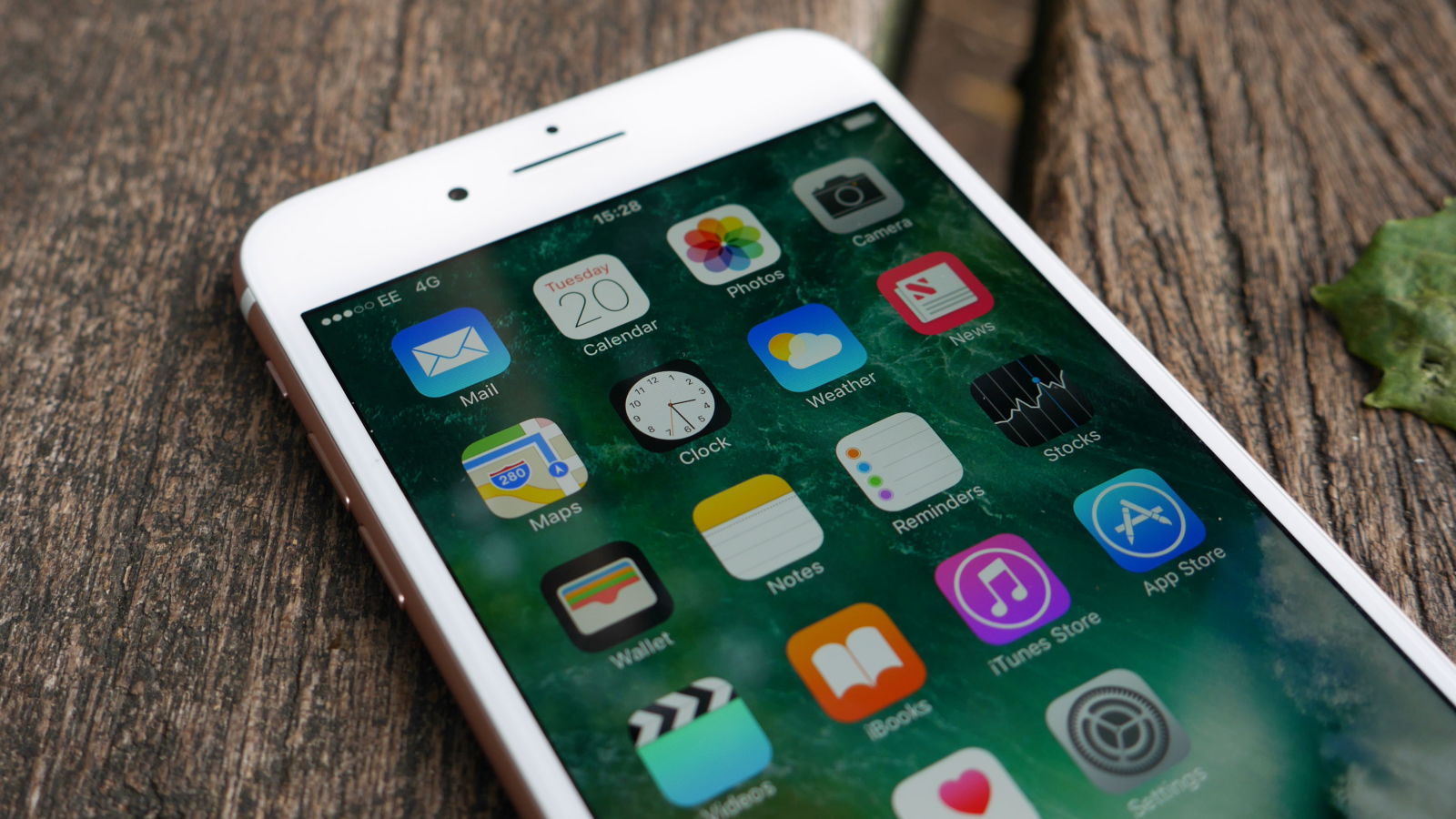
Since the launch of the first iPhone, screens haven’t just got bigger, they’ve become sharper, brighter, smarter and more vibrant too.
The original iPhone’s 320 x 480 resolution packed in more pixels than anything else around at the time, but thanks to the much vaster screen size, its 165 pixels-per-inch image density wasn’t the sharpest.
Now tech users are strapping screens with a similar resolution and much higher pixel density to their wrists, and phones like the iPhone 7 Plus are as pixel-rich as the TV that takes pride of place in your living room.
The Plus’s 5.5-inch Retina HD display boasts a 1920 x 1080 resolution and 401ppi image density that, combined with a 1300:1 contrast ratio and boosted brightness over past models, make it Apple’s best-looking yet.
While both phones run on capacitive touch (registering the finger’s electrical impulses rather than pressure to make the screen work), those touch elements have been enhanced and refined over the years.
Improved multitouch capabilities have been added and now 3D Touch means the iPhone 7 Plus’ screen is pressure sensitive too, comedically bringing back one of the features of early touchscreens that the first iPhone did away with.
Build
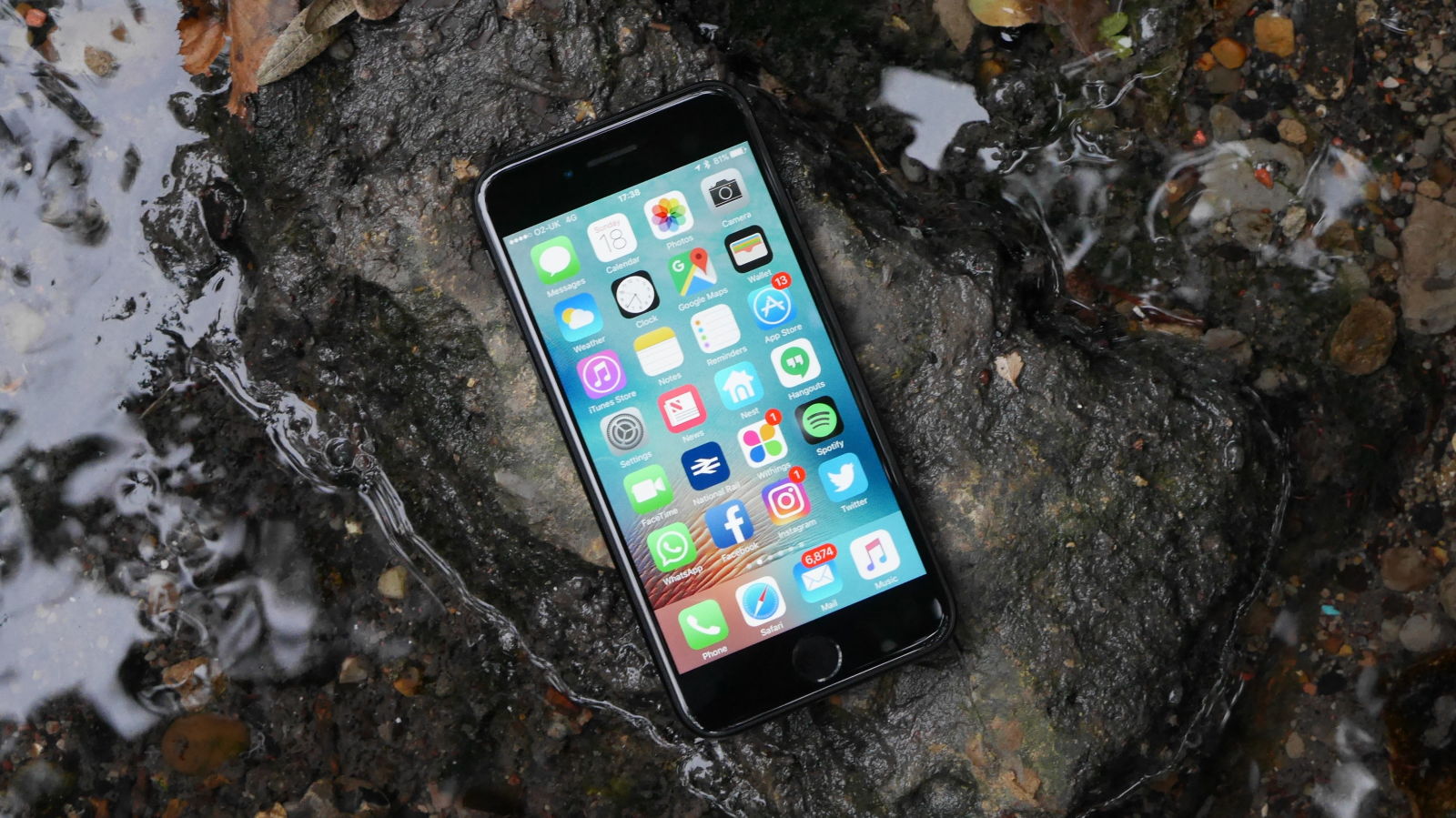
When the original iPhone was unveiled, its design and build was unlike anything seen on a phone, pairing an all-glass front with a largely metal back.
Lining up at 11.6mm thick and 135g it stood out from a sea of flip phones, sliders and boxy candy bar handsets that all favored plastic over sweeping curves.
A decade on, you can still see the original iPhone’s design DNA in the iPhone 7 Plus. At 7.3mm thick and 188g, the 7 Plus is finished with an all-metal body, in a choice of five colors. It’s also water-resistant to survive dips and dunks without succumbing to a liquid demise.
Apple’s phones haven’t been without design flaws though: from the iPhone 4’s "just don’t hold it that way" Antennagate issues to the Bendgate woes that saw some iPhone 6 Plus models warping, the company’s hit a few design stumbling blocks along the way.
Camera
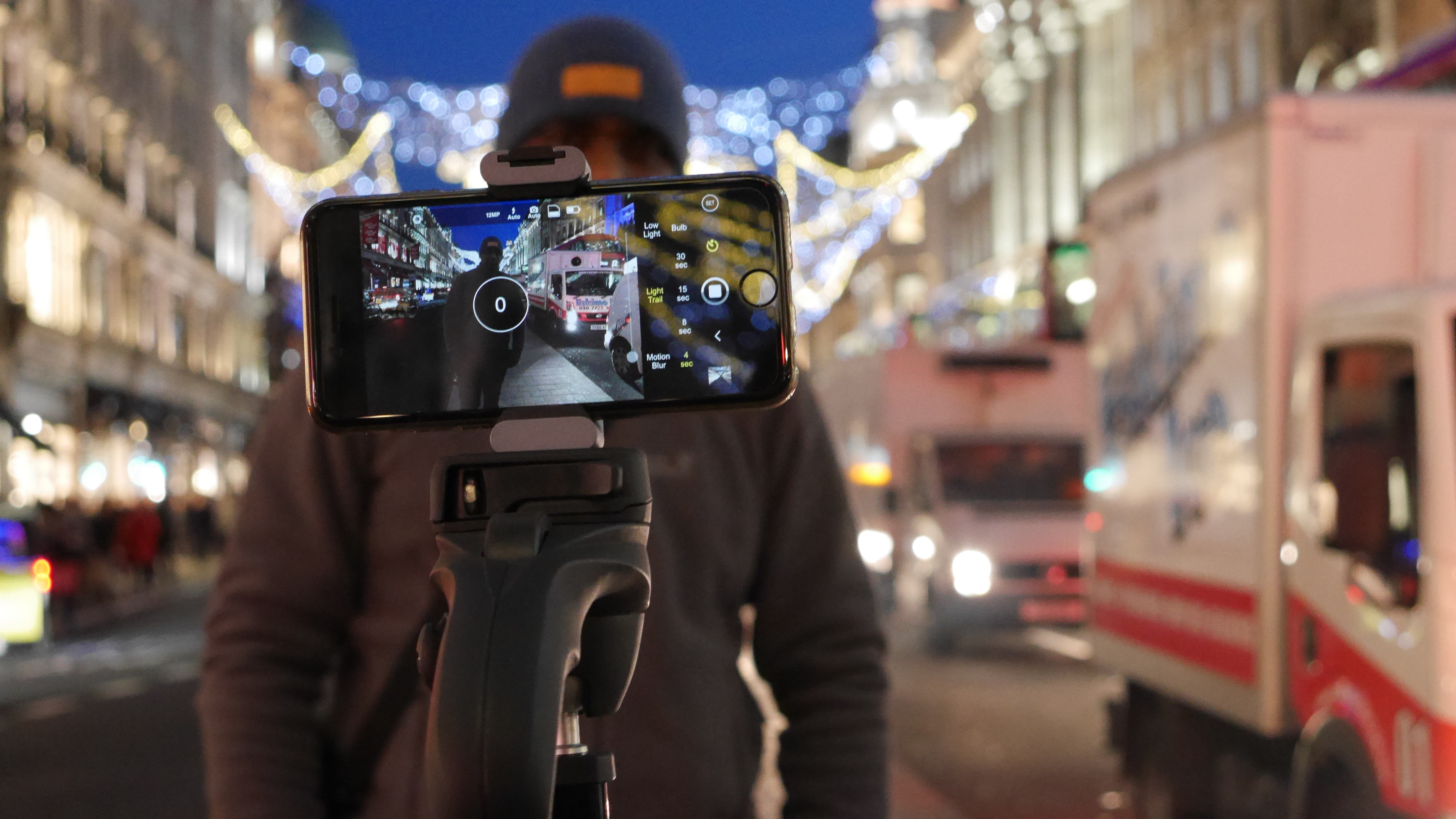
When the original iPhone was announced, cameras were still a luxury addition to smartphones.
However, Apple was planning to compete with the best in the market with its expensive phone, and with devices such as the Sony Ericsson K800i already featuring 3MP snappers and the forthcoming Nokia N95 offering a huge 5MP sensor, the iPhone’s flash-less 2MP camera was a solid if far from ground-breaking addition.
Now, the quality of the integrated camera is one of the main reasons we all buy new phones, and the iPhone 7 Plus has not one, but two sensors that take great photos - and that’s just on the back of the device.
With the phone pairing a wide-angle, wide-aperture f/1.8 lens that helps boost the phone’s low-light photography skills with a second, f/2.8 telephoto lens that takes you closer to the action without degrading the image, the 7 Plus’ dual-lens camera would have been unthinkable a decade ago - and Live Photos or 4K video recording would have caused the first iPhone’s CPU to melt.
And where the original iPhone featured just the one camera, the iPhone 7 Plus has them both front and back - in 2007 selfie wasn’t even a word.
Battery
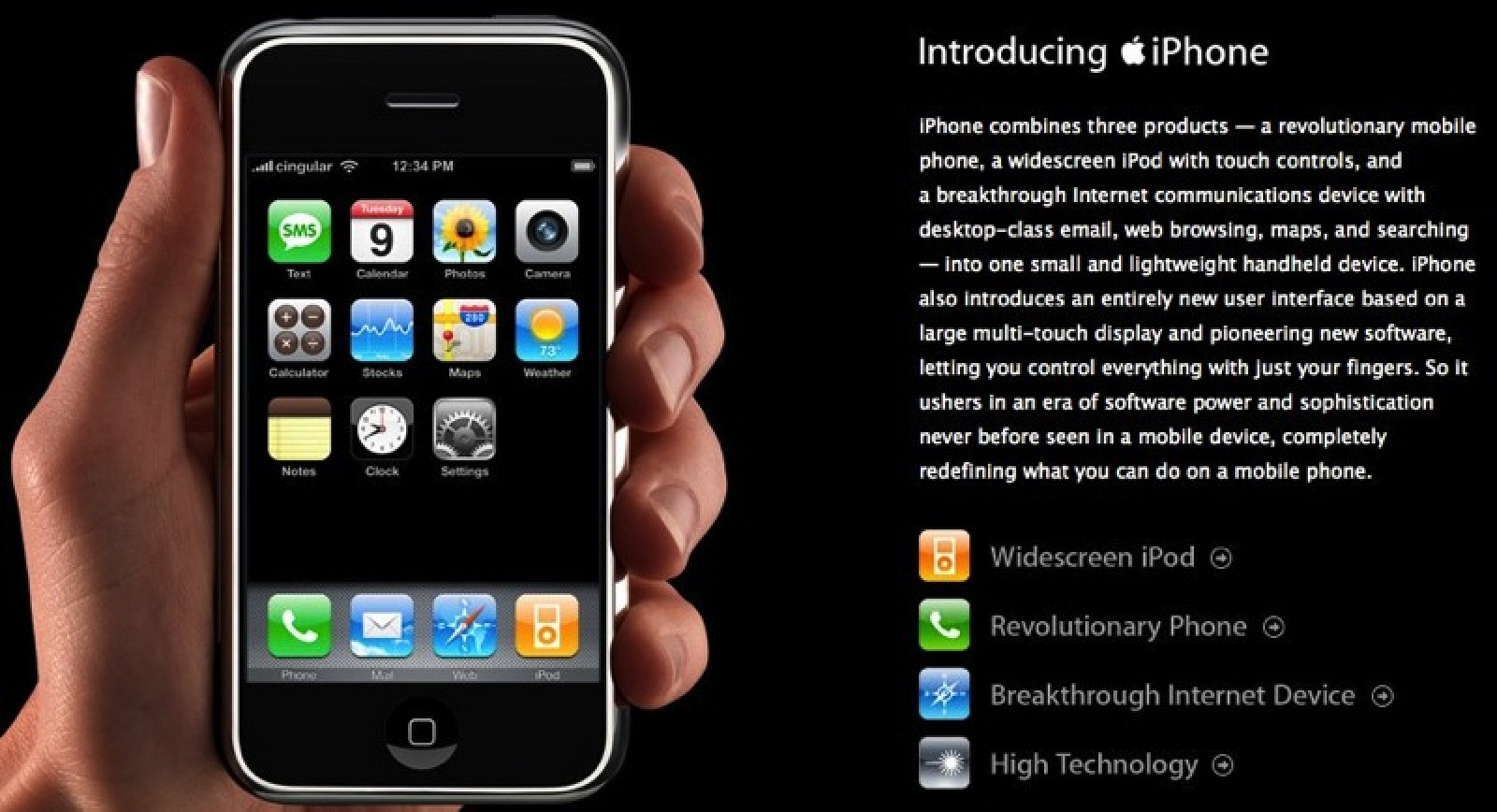
If the original iPhone’s screen, interface and design got people excited, its battery life filled any user with dread.
Back in 2007, phone batteries were able to last around a working week between charges, and yet Apple had to convince users that daily recharges and just eight hours of talk time on a single charge was worth paying a small fortune for.
The functionality of the phone won through, and now almost all smartphones are subjected to a nightly visit to a charger.
The iPhone 7 Plus’ oversized form has allowed a much bigger battery to be squeezed in - but despite almost tripling talk time to 21 hours, with so much more that the phone can do when it comes to web browsing, game playing and video streaming, you’ll still be running out of battery come the end of the day - some things do never change.
Power
For a first smartphone attempt, the original iPhone packed a serious computing punch. The 412MHz ARM 11 CPU that powered the handset was faster than had previously been seen in phones, and was paired with a PowerVR MBX GPU.
It essentially put a computer in your pocket, and birthed a range of more power-heavy handsets.
Computing power is an area that truly highlights how far phones have come over the past decade though: the 64-bit A10 Fusion chip found within the latest iPhones isn’t just 10 or even 20 times more powerful than the debut iPhone, but a staggering 120 times faster.
Featuring four cores and 3.3 billion transistors, it’s a 2.34GHz quad-core, computer-rivaling chipset that will breeze through almost any task thrown at it, as you can see in the speed test below.
From intensive gaming to work-beating multitasking, the iPhone 7 Plus is a caged beast to the snail of the original iPhone.
Storage

Just like the iPod, which gave users the chance to put thousands of songs in their pocket when CDs were still the main way of carrying music, the first iPhone upped the storage stakes in the phone game.
In 2007, leading phones were packing anywhere between 64MB of expandable storage to a 2GB inbuilt capacity.
Apple shook this up with a trio of storage capacity options, with the entry-level 4GB model already twice as large as most other phones on the market - it was a bold move that drove up cost.
This was just the base level, too, as more expensive iPhones could be had with 8GB of storage, with a larger 16GB device released at a later date.
You can’t even buy a 16GB iPhone 7 Plus. The base model has moved to 32GB over the past 10 years, as files have become greater in size and quantity. This is just the foundations for laptop-rivalling levels of storage though, with the other two jumping off points now being 128GB and a staggering 256GB.
One thing’s not changed over the past decade though. Like the very first iPhone, the latest models still lack any microSD expansion options.
Connections
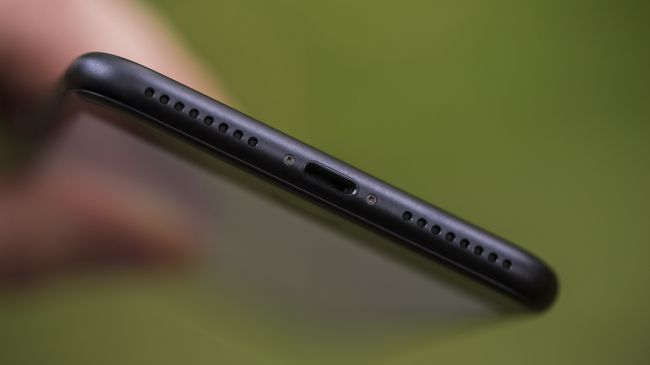
Due to their mass adoption, iPhones have regularly caused uproar when connection ports have changed. The first iPhone launched with the same 30-pin power and transfer connector as had been on the company’s iPods for a number of years.
That meant that it seamlessly worked with all the accessories and docks iPod owners already had and dovetailed nicely into an established ecosystem.
But Apple fans were upset in 2012, when the iPhone 5 appeared having ditched the longstanding 30-pin connection for a faster, smaller, more multipurpose Lightning port.
Suddenly all these add-ons were redundant and the cost of the phone was going to be enhanced with all the new accessories needed.
The iPhone 7 Plus has seen a similar uproar caused, thanks to the culling of the traditional 3.5mm headphone jack - although, ironically, the first iPhone couldn’t handle most 3.5mm headphones anyway, due to the connection being recessed into the phone.
Software / UI
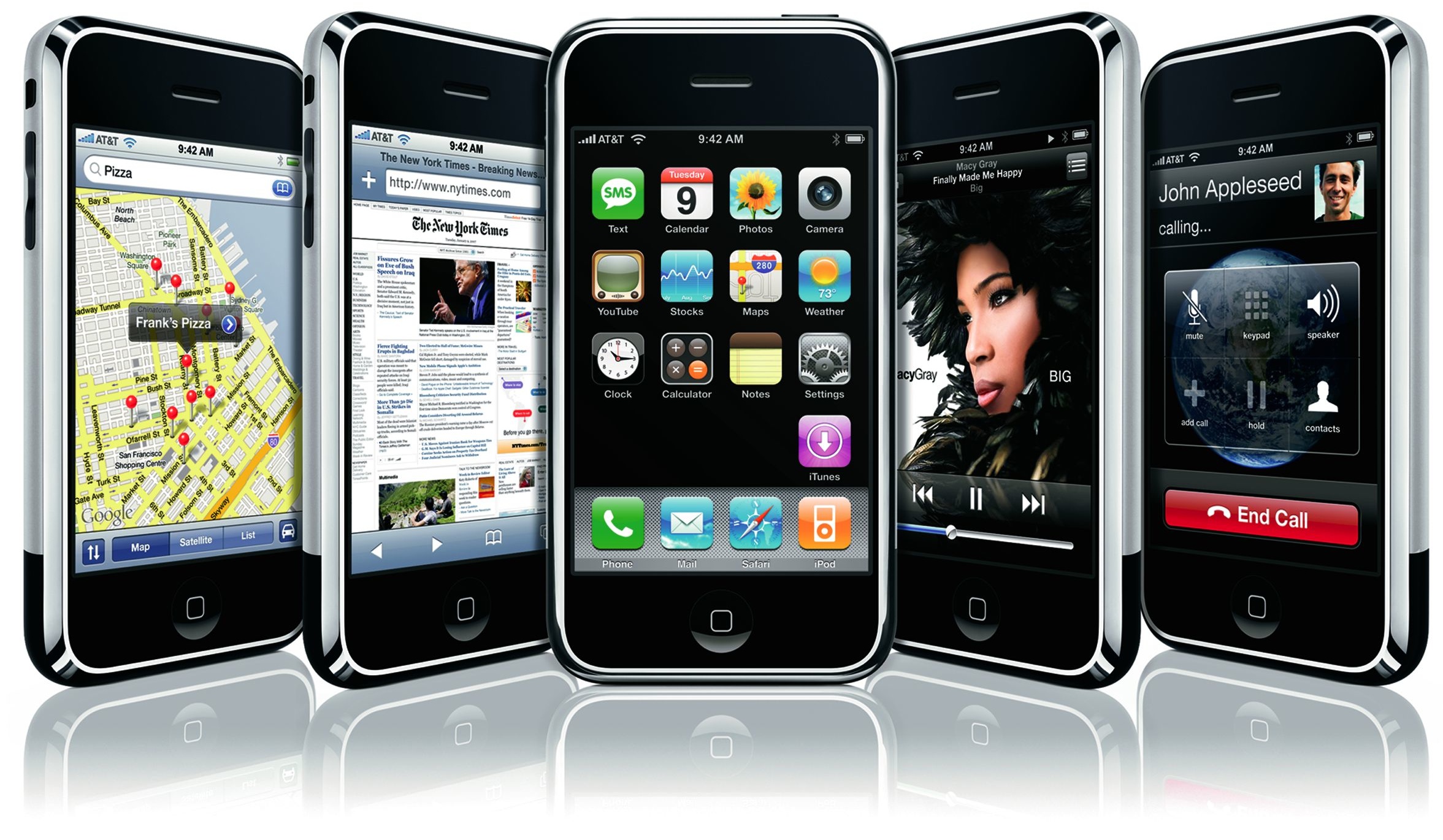
As much as its innovative design and mass of high-end components set the first iPhone apart, combined with the touchscreen, it was its iOS operating system (back then known as iPhone OS) that made the iPhone a star.
Instead of endless fiddly menus and lists of options, the first Apple phone introduced a more simple, elegant point and shoot interface.
However, while the same grid-like structure remains, the first wave was of skeuomorphic, real-world designs displayed as apps - and there were very few of them indeed. The iPhone couldn’t do a lot out of the box.
It wasn’t until a year later, with the launch of the iPhone 3G, that the iPhone’s main software selling point dropped - the App Store. By opening up its software to third party developers, Apple started what would quickly become the smartphone standard, with its App Store now offering more than 2 million apps.
New software features have continued to drop year-after-year over the past decade, with simple additions like copy and paste in the early days making way for Apple’s digital assistant, Siri, in recent years.
The iPhone 7 Plus is a different-looking beast to the first device, with iOS 7 changing the look of Apple’s phones to a brighter, flatter and more clean design, which has been maintained through to iOS 10.
Now users can swipe from the top, bottom and left of the screen to get access to more controls, where the first iPhone could… well, you didn’t need to swipe anywhere as there were no apps.
Connectivity

It’s not just the physical connections that have changed with the iPhone either. The connectivity has also come on leaps and bounds since 2007, when the original iPhone overlooked 3G for sluggish EDGE cellular connectivity.
3G compatible phones had been available since late 2004, but Apple didn’t add such support until its second-generation phone, the aptly named iPhone 3G, in 2008. The first iPhone lacked GPS too, with just Bluetooth 2.0 and Wi-Fi 802.11b/g rounding out its connectivity options.
Subsequent iPhones have continued what the iPhone 3G started and carried on offering faster, more reliable cellular connections as the infrastructure has grown, with the latest models supporting LTE-Advanced Pro, or 4.5G connections, meaning you can download apps and even full length HD movies in a matter of seconds.
Support for new, faster Wi-Fi 802.11a/b/g/n/ac standards have also been added, GPS is combined with GLONASS for extra reliability with location tracking, and stronger, speedier, more reliable Bluetooth 4.2 has also joined the mix.
Even NFC is on board now, although its use is limited to paying for things with your phone.
The iPhone 7 Plus is one of the fastest phones on the market when it comes to downloading content to your handset - it’s hard to imagine that back in 2008, Steve Jobs was standing on stage for 59 seconds silently while a web page loaded:
- Will the iPhone influence human evolution?
- Main image credit: Getty
from TechRadar: Phone and communications news http://www.techradar.com/news/how-the-iphone-has-transformed-over-10-years
No comments:
Post a Comment